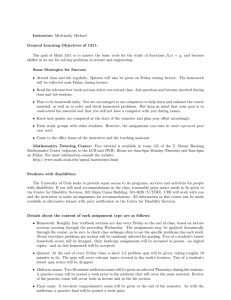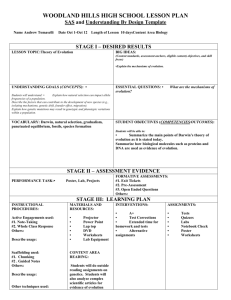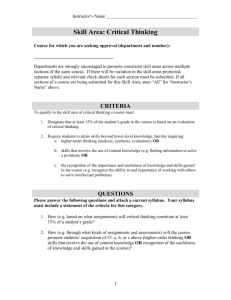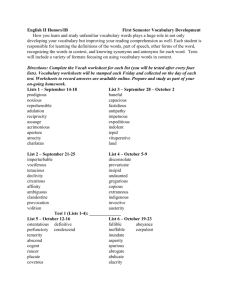Baton Rouge Community College Academic Affairs Master Syllabus
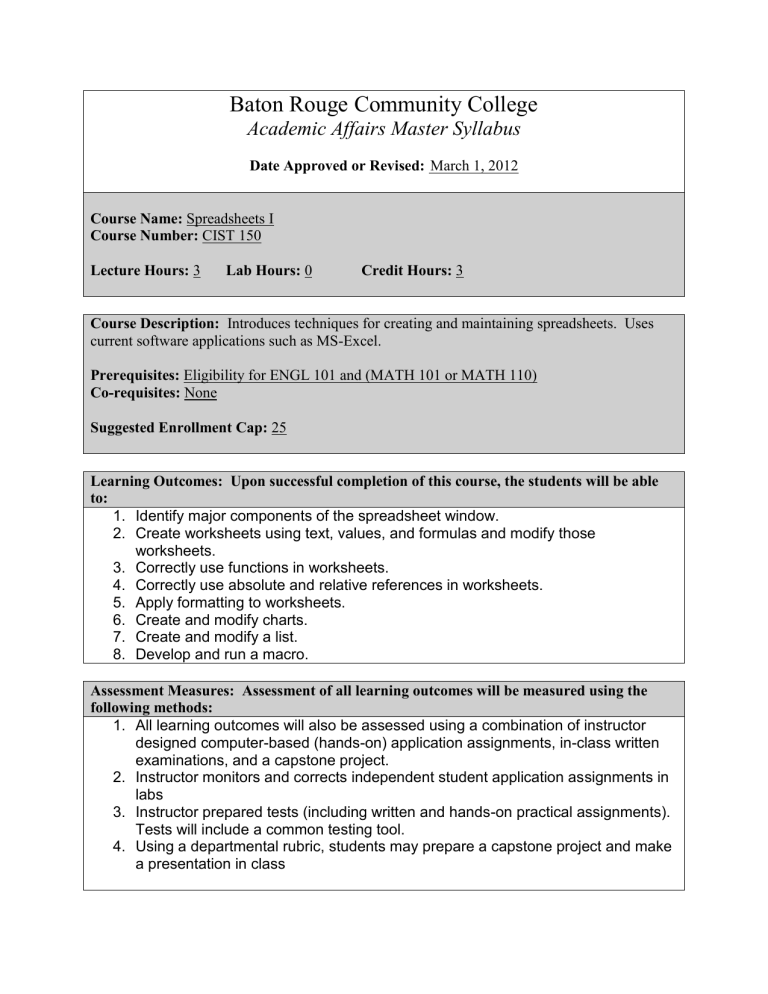
Baton Rouge Community College
Academic Affairs Master Syllabus
Date Approved or Revised: March 1, 2012
Course Name: Spreadsheets I
Course Number: CIST 150
Lecture Hours: 3 Lab Hours: 0 Credit Hours: 3
Course Description: Introduces techniques for creating and maintaining spreadsheets. Uses current software applications such as MS-Excel.
Prerequisites: Eligibility for ENGL 101 and (MATH 101 or MATH 110)
Co-requisites: None
Suggested Enrollment Cap: 25
Learning Outcomes: Upon successful completion of this course, the students will be able to:
1. Identify major components of the spreadsheet window.
2. Create worksheets using text, values, and formulas and modify those worksheets.
3. Correctly use functions in worksheets.
4. Correctly use absolute and relative references in worksheets.
5. Apply formatting to worksheets.
6. Create and modify charts.
7. Create and modify a list.
8. Develop and run a macro.
Assessment Measures: Assessment of all learning outcomes will be measured using the following methods:
1. All learning outcomes will also be assessed using a combination of instructor designed computer-based (hands-on) application assignments, in-class written examinations, and a capstone project.
2. Instructor monitors and corrects independent student application assignments in labs
3. Instructor prepared tests (including written and hands-on practical assignments).
Tests will include a common testing tool.
4. Using a departmental rubric, students may prepare a capstone project and make a presentation in class
Information to be included on the Instructor’s Course Syllabi:
Disability Statement: Baton Rouge Community College seeks to meet the needs of its students in many ways. See the Office of Disability Services to receive suggestions for disability statements that should be included in each syllabus.
Grading: The College grading policy should be included in the course syllabus. Any special practices should also go here. This should include the instructor’s and/or the department’s policy for make-up work. For example in a speech course, “Speeches not given on due date will receive no grade higher than a sixty” or “Make-up work will not be accepted after the last day of class.”
Attendance Policy: Include the overall attendance policy of the college. Instructors may want to add additional information in individual syllabi to meet the needs of their courses.
General Policies: Instructors’ policy on the use of things such as beepers and cell phones and/or hand held programmable calculators should be covered in this section.
Cheating and Plagiarism: This must be included in all syllabi and should include the penalties for incidents in a given class. Students should have a clear idea of what constitutes cheating in a given course.
Safety Concerns: In some programs this may be a major issue. For example, “No student will be allowed in the safety lab without safety glasses.” General statements such as, “Items that may be harmful to one’s self or others should not be brought to class.”
Library/ Learning Resources: Since the development of the total person is part of our mission, assignments in the library and/or the Learning Resources Center should be included to assist students in enhancing skills and in using resources. Students should be encouraged to use the library for reading enjoyment as part of lifelong learning.
Expanded Course Outline:
I.
Using an Electronic Spreadsheet to Manage Financial Data
A.
Introducing electronic spreadsheets
B.
Navigating in a workbook
C.
Working with ranges
D.
Entering information into a worksheet
E.
Working with rows and columns
F.
Printing worksheets
Formulas and Functions
A.
Working with functions
B.
Copying and pasting formulas
C.
Relative and absolute references
D.
Logical functions
III. Formatting a Worksheet
A.
Formatting data
B.
Working with headers and footers
C.
Working with the print area and page breaks
IV. Charts
A.
Creating a chart
B.
Working with a chart
C.
Printing charts
V. Lists
A.
Creating a list
B.
Sorting data
C.
Modifying a list
D.
Inserting Subtotals into a list
VI. Working with Multiple Worksheets and Workbooks
A.
Working with multiple worksheets
B.
Using templates
C.
Working with multiple workbooks
VII. Working with Editing and Web Tools
A.
Using auditing tools to trace errors
B.
Creating a shared workbook
C.
Tracking changes
D.
Merging workbooks
E.
Publishing a spreadsheet for a Web site
VIII. Developing an application
A.
Planning an application
B.
Validating data entry
C.
Protecting a worksheet and workbook
D.
Working with range names
E.
Creating and using macros

